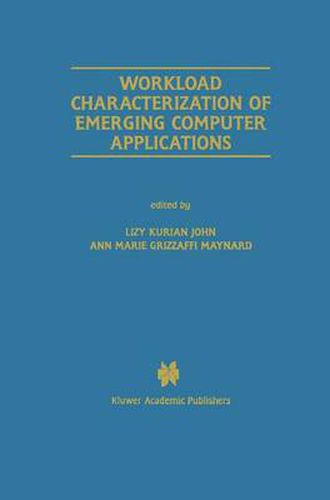Readings Newsletter
Become a Readings Member to make your shopping experience even easier.
Sign in or sign up for free!
You’re not far away from qualifying for FREE standard shipping within Australia
You’ve qualified for FREE standard shipping within Australia
The cart is loading…






This title is printed to order. This book may have been self-published. If so, we cannot guarantee the quality of the content. In the main most books will have gone through the editing process however some may not. We therefore suggest that you be aware of this before ordering this book. If in doubt check either the author or publisher’s details as we are unable to accept any returns unless they are faulty. Please contact us if you have any questions.
The formal study of program behavior has become an essential ingredient in guiding the design of new computer architectures. Accurate characterization of applications leads to efficient design of high performing architectures. Quantitative and analytical characterization of workloads is important to understand and exploit the interesting features of workloads. This book includes ten chapters on various aspects of workload characterizati on. File caching characteristics of the industry-standard web-serving benchmark SPECweb99 are presented by Keller et al. in Chapter 1, while value locality of SPECJVM98 benchmarks are characterized by Rychlik et al. in Chapter 2. SPECJVM98 benchmarks are visited again in Chapter 3, where Tao et al. study the operating system activity in Java programs. In Chapter 4, KleinOsowski et al. describe how the SPEC2000 CPU benchmark suite may be adapted for computer architecture research and present the small, representative input data sets they created to reduce simulation time without compromising on accuracy. Their research has been recognized by the Standard Performance Evaluation Corporation (SPEC) and is listed on the official SPEC website, http://www. spec. org/osg/cpu2000/research/umnl. The main contribution of Chapter 5 is the proposal of a new measure called locality surface to characterize locality of reference in programs. Sorenson et al. describe how a three-dimensional surface can be used to represent both of programs. In Chapter 6, Thornock et al.
$9.00 standard shipping within Australia
FREE standard shipping within Australia for orders over $100.00
Express & International shipping calculated at checkout
This title is printed to order. This book may have been self-published. If so, we cannot guarantee the quality of the content. In the main most books will have gone through the editing process however some may not. We therefore suggest that you be aware of this before ordering this book. If in doubt check either the author or publisher’s details as we are unable to accept any returns unless they are faulty. Please contact us if you have any questions.
The formal study of program behavior has become an essential ingredient in guiding the design of new computer architectures. Accurate characterization of applications leads to efficient design of high performing architectures. Quantitative and analytical characterization of workloads is important to understand and exploit the interesting features of workloads. This book includes ten chapters on various aspects of workload characterizati on. File caching characteristics of the industry-standard web-serving benchmark SPECweb99 are presented by Keller et al. in Chapter 1, while value locality of SPECJVM98 benchmarks are characterized by Rychlik et al. in Chapter 2. SPECJVM98 benchmarks are visited again in Chapter 3, where Tao et al. study the operating system activity in Java programs. In Chapter 4, KleinOsowski et al. describe how the SPEC2000 CPU benchmark suite may be adapted for computer architecture research and present the small, representative input data sets they created to reduce simulation time without compromising on accuracy. Their research has been recognized by the Standard Performance Evaluation Corporation (SPEC) and is listed on the official SPEC website, http://www. spec. org/osg/cpu2000/research/umnl. The main contribution of Chapter 5 is the proposal of a new measure called locality surface to characterize locality of reference in programs. Sorenson et al. describe how a three-dimensional surface can be used to represent both of programs. In Chapter 6, Thornock et al.